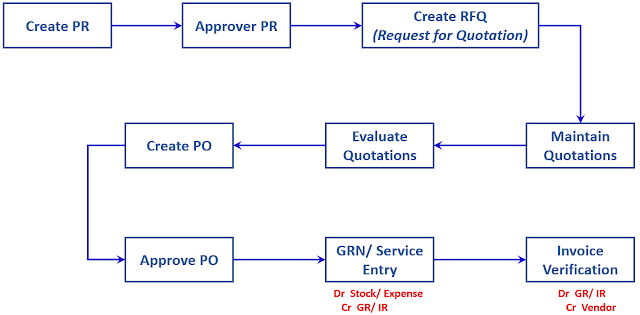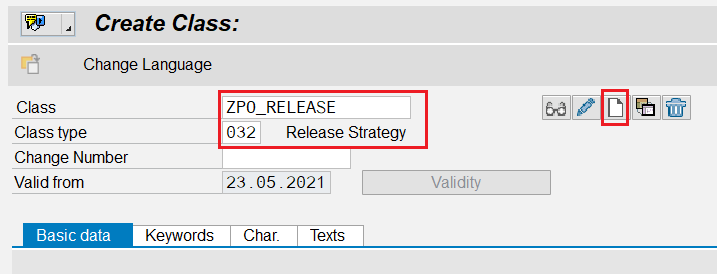Setting up a Release Strategy for PO : Part 1 (Concepts & Best Practices in SAP ERP)
This article explains the concepts, in setting up a
release strategy for PO in SAP ERP. The Part 2 of this article would explain the
steps in setting up a release strategy for PO.
Basic Concepts in SAP PO Release Strategy
A group of characteristics. This set of characteristics is common for all Release Groups
2. Characteristics
Fields that are used to
determine/ trigger the release strategy for PO.
If PO Type for example, is defined as a
characteristic, the release strategy is triggered based on the value given (Eg:
NB) for this particular characteristic, within the release strategy.
3. Release Group
Logical grouping of release strategies. Could even use a single release group if required. But it’s better to have different groups for ease of identification & management.
4. Release Code
A unique code assigned to a PO approver. It is advisable to have unique codes for each approver. This improves tractability & would be easy when providing authorizations.
5. Release Indicator
Defines whether a PO could be changed or not after it is approved. Further, it defines the scenarios under which the release is re-triggered.
6. Release Strategy
The Release Strategy of a PO defines the list of approvers for a given purchase & the order in which the approval takes place.
Do keep the below points in mind when setting up a
Release Strategy for PO in SAP. These points are based on SAP standards &
the best practices of SAP.
Important Points
- Release Strategy for PO could only be configured at header level
- A maximum of 8 approval levels could be configured in a release strategy
- Only a single PO Release Class could be created in the same client – Since we could only have a single release class, all PO release strategies would have a common set of characteristics. It is not possible to have different sets of characteristics for different companies or plants
Example : We cannot set up PO release strategies for the below requirement, since the 2 companies are having different characteristics
Company A
|
Purchasing Organization, Company Code
& Purchase Group
|
Company B
|
Purchasing Organization, Company
Code, Purchase Group & Plant
|
However, we can set up a release for the below requirement since both companies are having the same set of characteristics
Company A
|
Purchasing Organization, Company Code
& Purchase Group
|
Company B
|
Purchasing Organization, Company Code
& Purchase Group
|
These are the core concepts that you need to be familiar with, before setting up a Release Strategy for PO. My next article (Part 2), would explain in detail, how a Release Strategy could be configured in SAP.








This blog is very much helpful to us. Thanks for your information
ReplyDeleteGuest posting sites
Technology
Thank you very much for your feedback
DeleteHi there please do for PR release strategy. How to assign release code to a user ID?
ReplyDeleteSure I will post one soon
DeleteThese articles are exactly what I need. I have a liking for your posts. Thanks to your sharing, I can enrich my knowledge. Inventory management software
ReplyDeleteI generally check this kind of article and I found your article which is related to my interest. it is good and instructive information. Thankful to you for sharing an article like this. check here also company hierarchy
ReplyDeleteI like your post. It really useful with me. Thanks for sharing these useful information!
ReplyDeletebfsi org charts